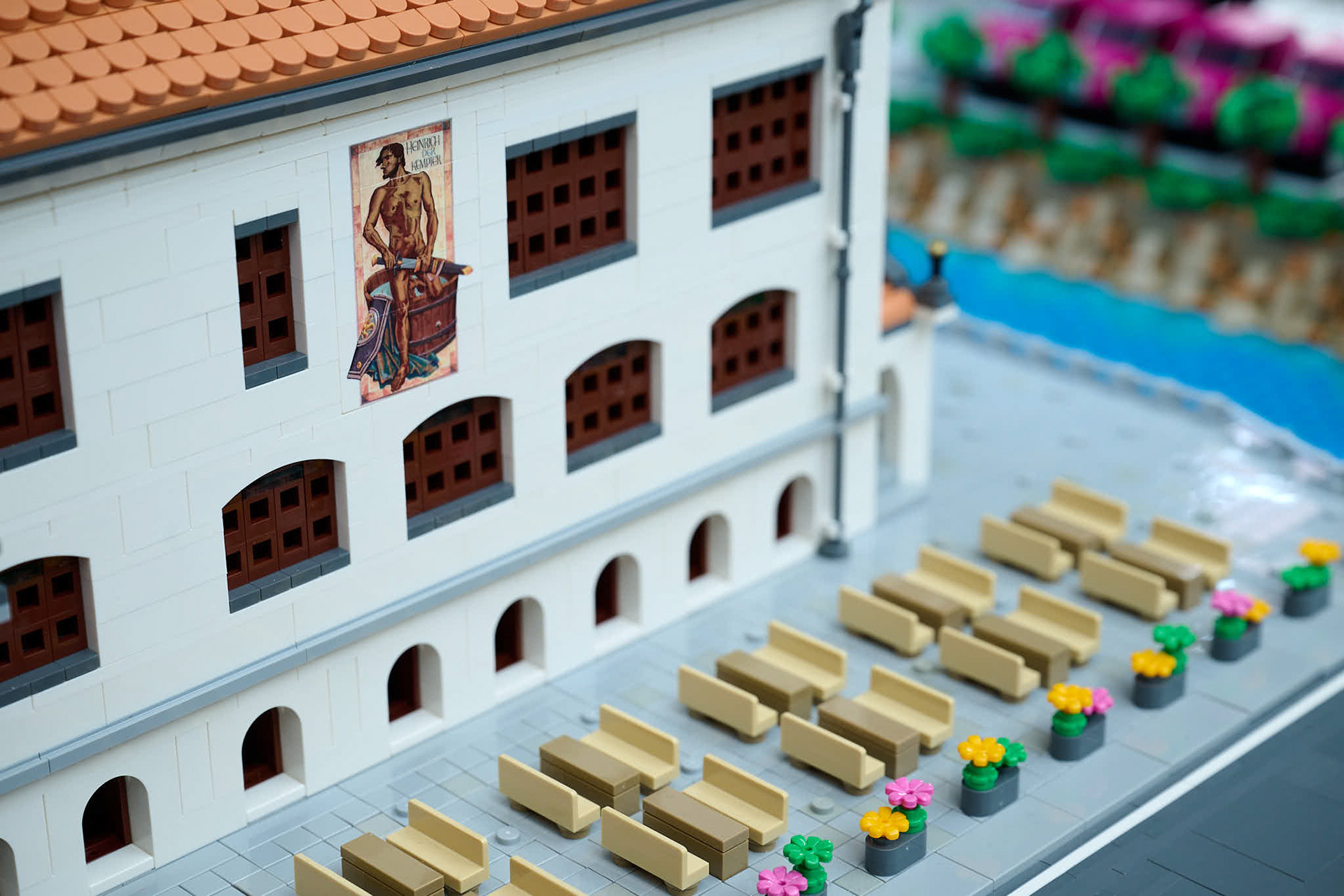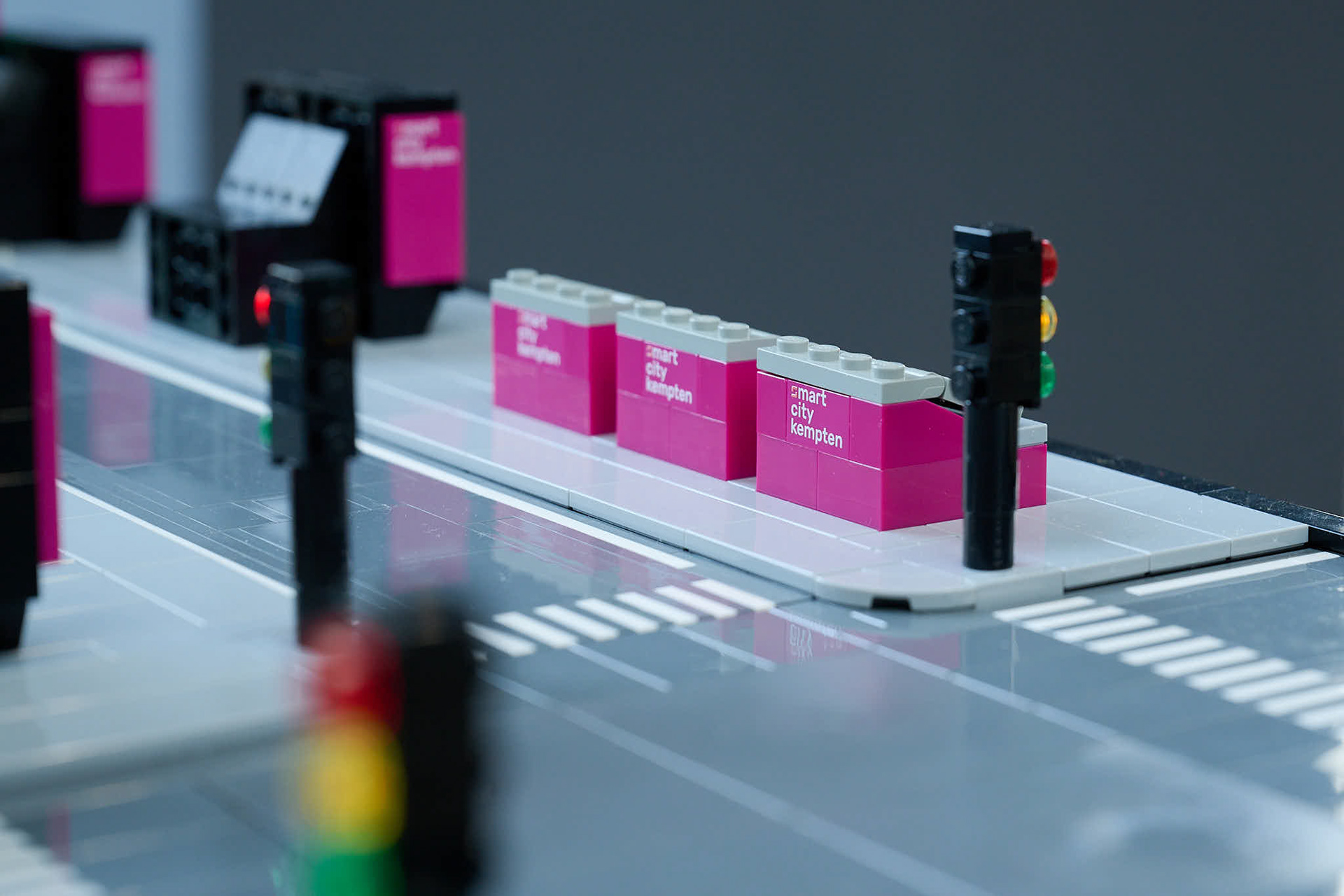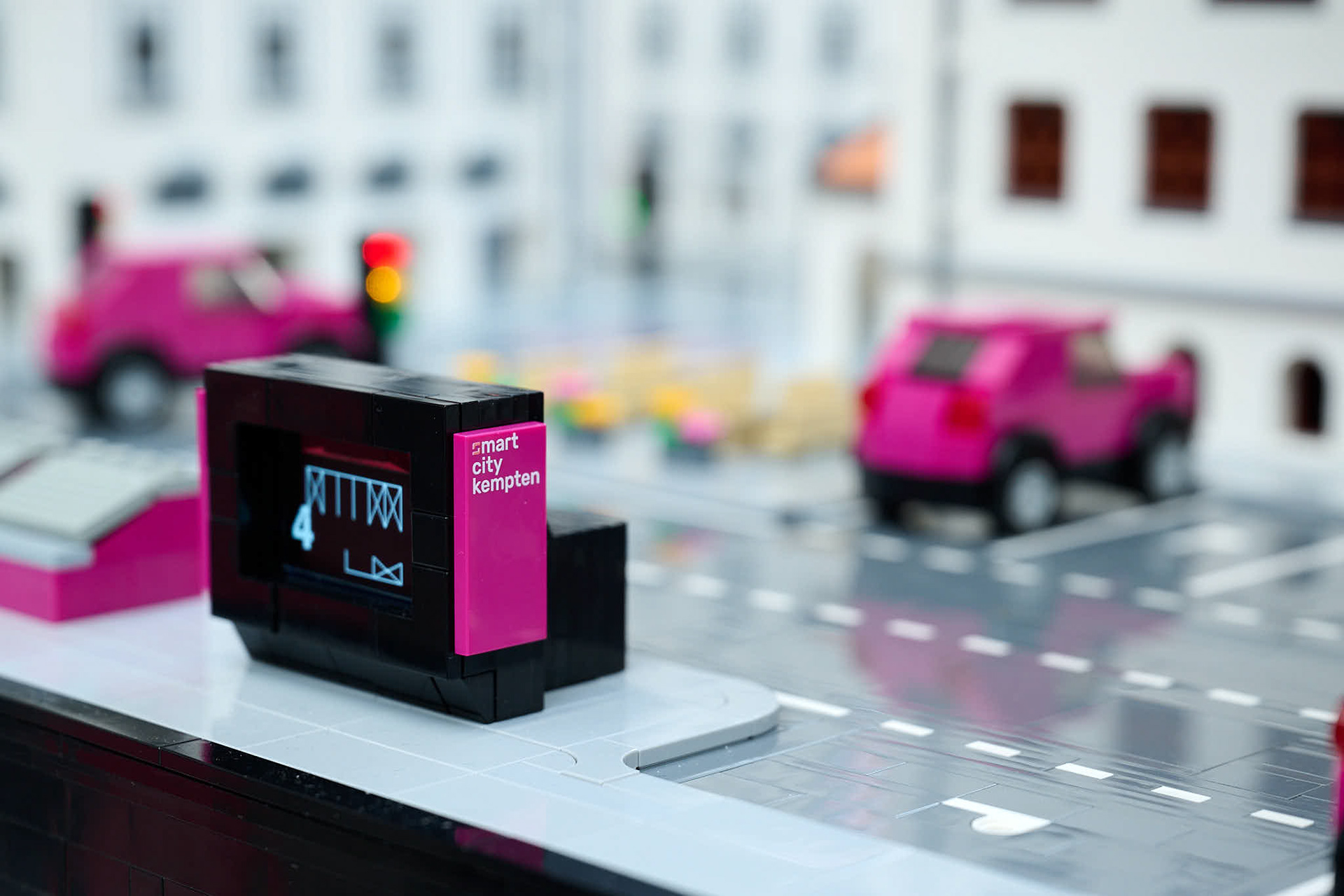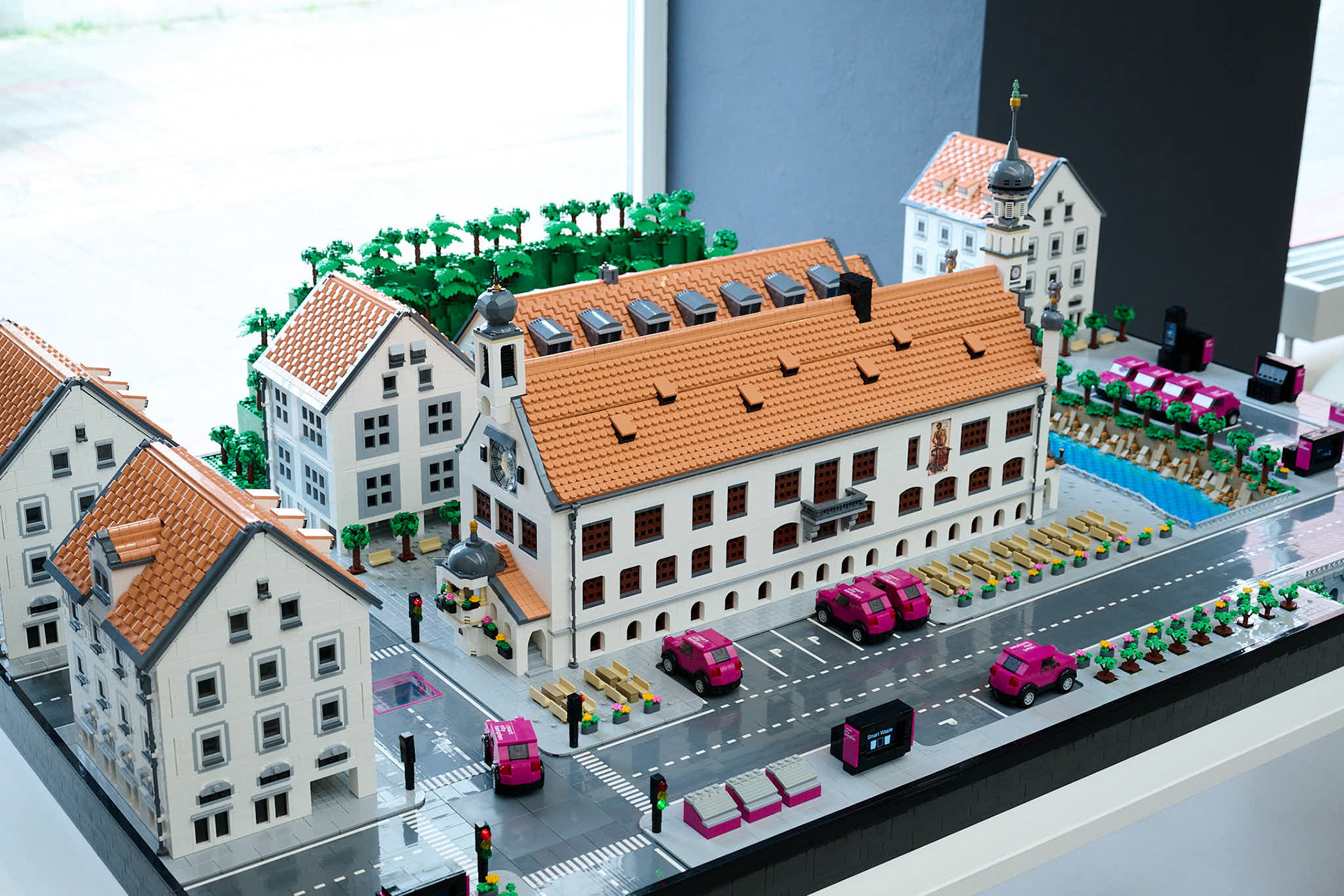

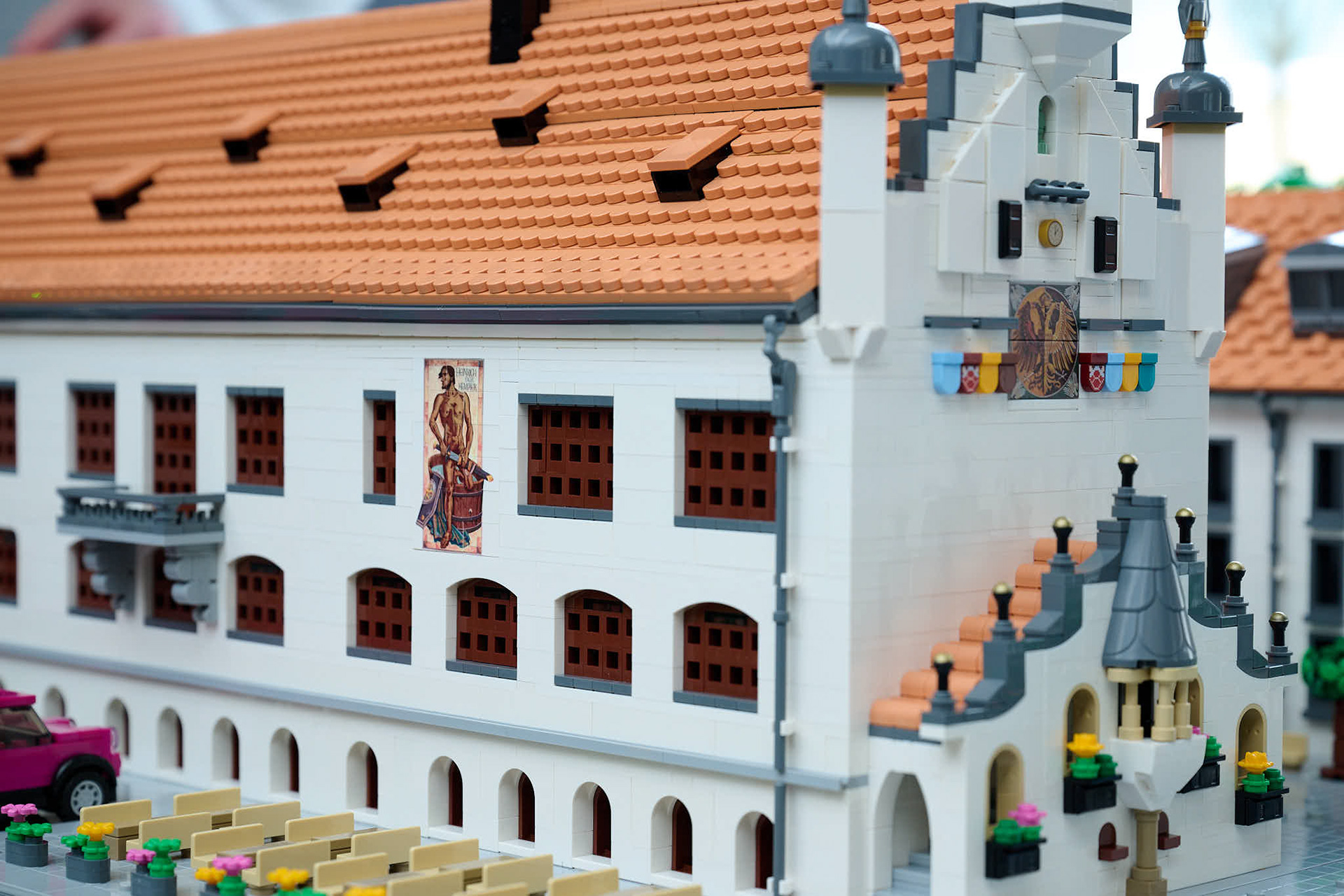
Since the beginning of 2022 the city of Kempten in Germany has been working on showcasing and developing innovative technologies as part of the Smart city project. Aiming to implement solutions that enhance the quality of life in the city, part of the project is to communicate these future solutions to the citizens via an experience-space called the Zukunftslabor (engl. future lab). In 2024 I was commissioned to create an interactive LEGO® model that helps illustrate the Smart City concepts in a playful and approachable way. The model consists of more than 50.000 LEGO® pieces and was delivered at the beginning of 2025.
At the centre of the 1,6 meter by 1 meter diorama stands a replication of Kempten's iconic city hall. Additionally, references to the cities administration building as well as the river Iller have also been included. However, instead of being a true-to-scale reproduction of the actual city layout, the area around the city hall has been adjusted to highlight the various Smart city technologies. Therefore the cars, streets, garbage bins and traffic lights have been simplified and scaled up and the houses are made more uniform.
The specific functions are: (1) Tracking and displaying which parking spots are free and which are occupied. (2) Counting the number of cars crossing the intersections. (3) Measuring and displaying the temperature and humidity. (4) Displaying which garbage containers are full and need to be emptied. (5) Functioning traffic signals.
In order to realise those functions, the model is equipped with various real sensors and actuators which are embedded under the streets. They create a functional digital twin of the city.
The parking spaces are monitored using time-of-flight distance sensors (Model number VL53L0X) that detect whether a vehicle is present by measuring the distance to the ground. They are hidden within the circle of the P-sign (Part-ID 11458) on the floor.
Meanwhile, traffic counting at intersections is accomplished by using magnetic hall effect sensors (Model number KY-024) that detect vehicles passing over them, similar to induction loops in real streets. Each car contains a magnet in order to interact with the sensors.
The Smart waste containers have translucent side panels and are easy to pull out in order to empty them. They use light sensors (Model number GY302/BH1750) combined with LED light barriers placed in the floor to detect fill levels - when the waste accumulates high enough to block the light, the sensor registers the container as being full.
The traffic lights incorporate tiny SMD LEDs (red, yellow, and green) mounted behind transparent, round LEGO® plates. They run through a realistic traffic light sequence controlled by the microcontrollers.
Lastly, the environmental monitoring station uses a sensor (Model number BME280) to measure temperature, humidity, and air pressure, plus an additional light sensor for ambient light levels. All of this data is displayed on small OLED screens integrated into the model and transmitted via WiFi to an MQTT broker for real-time monitoring.
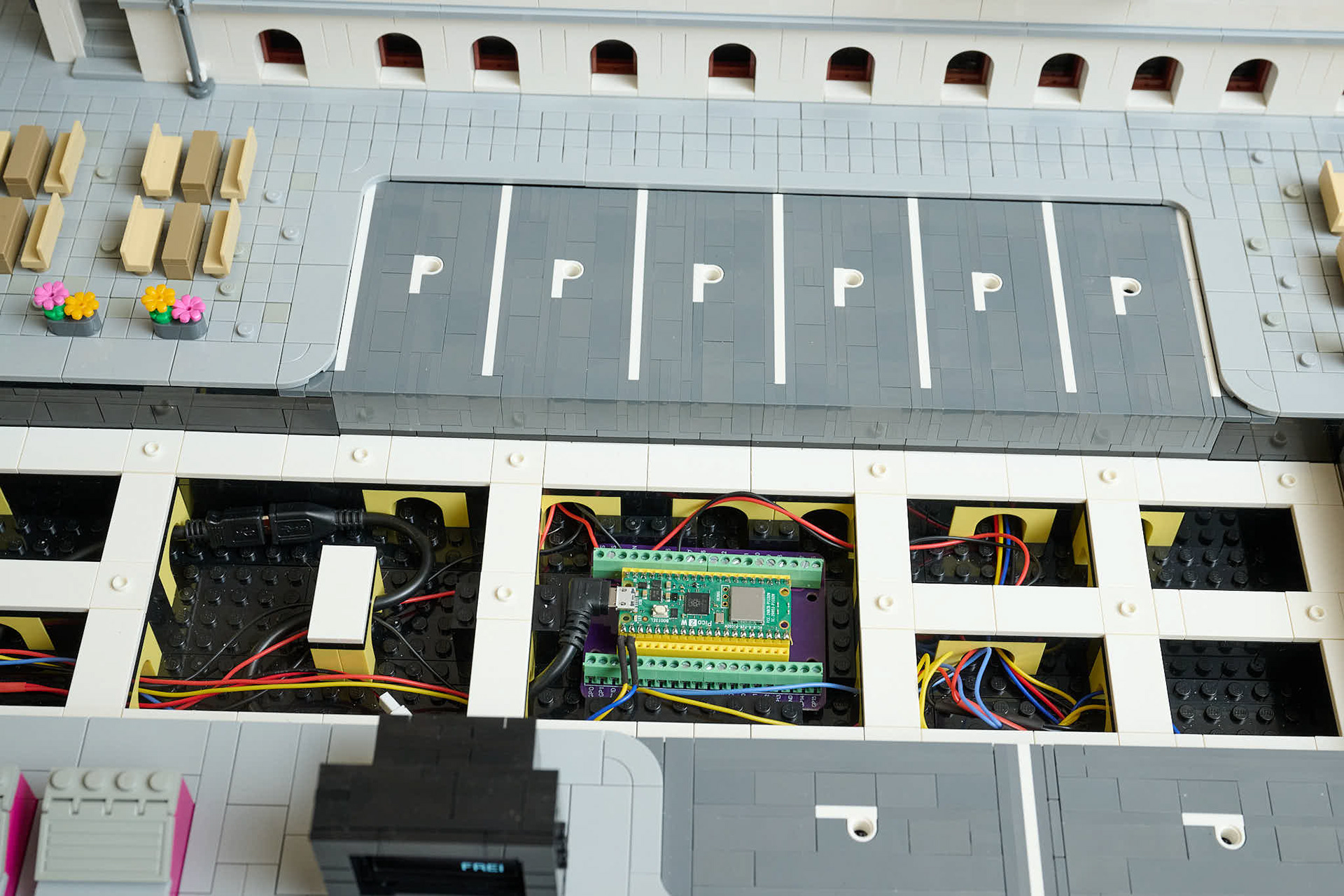
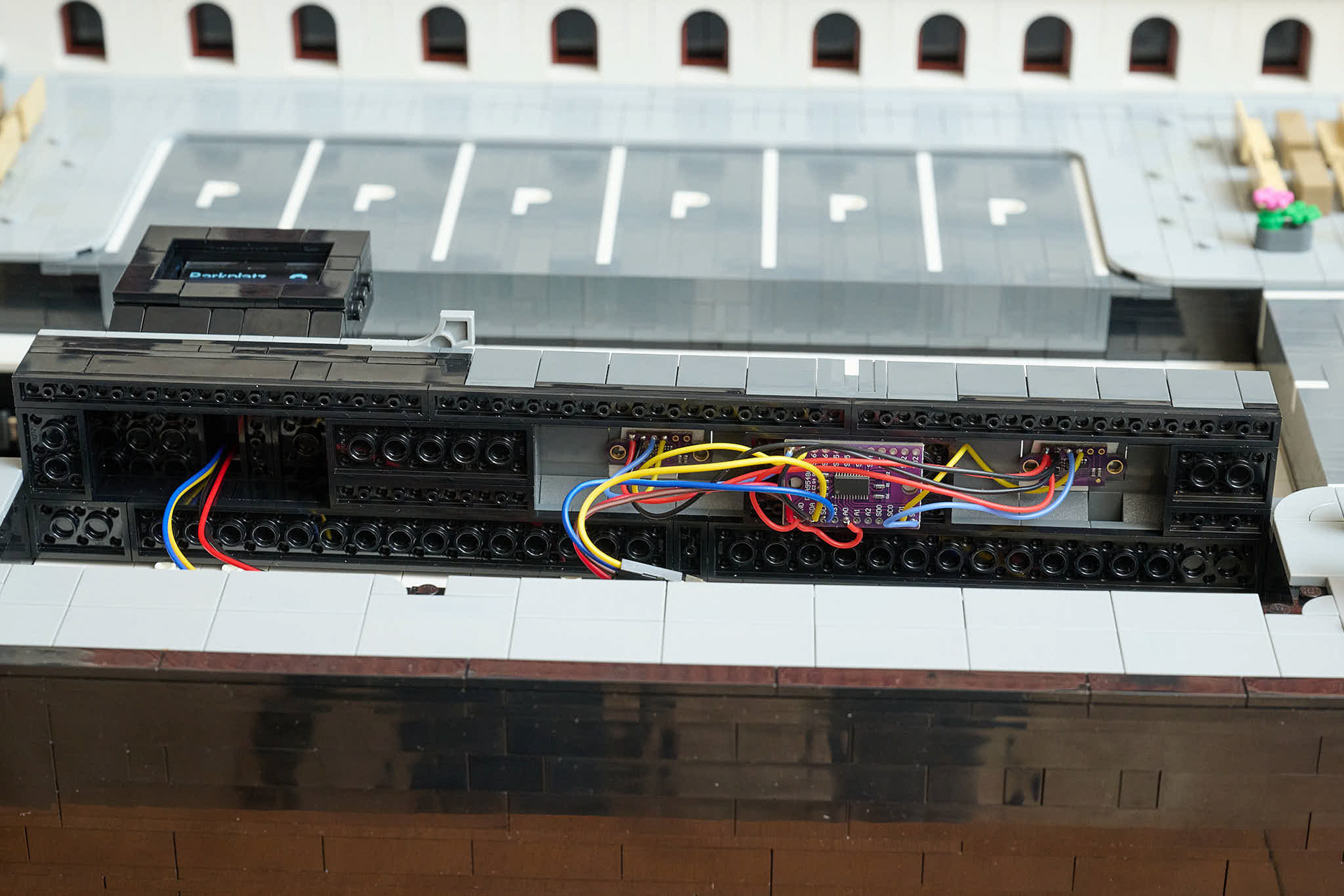

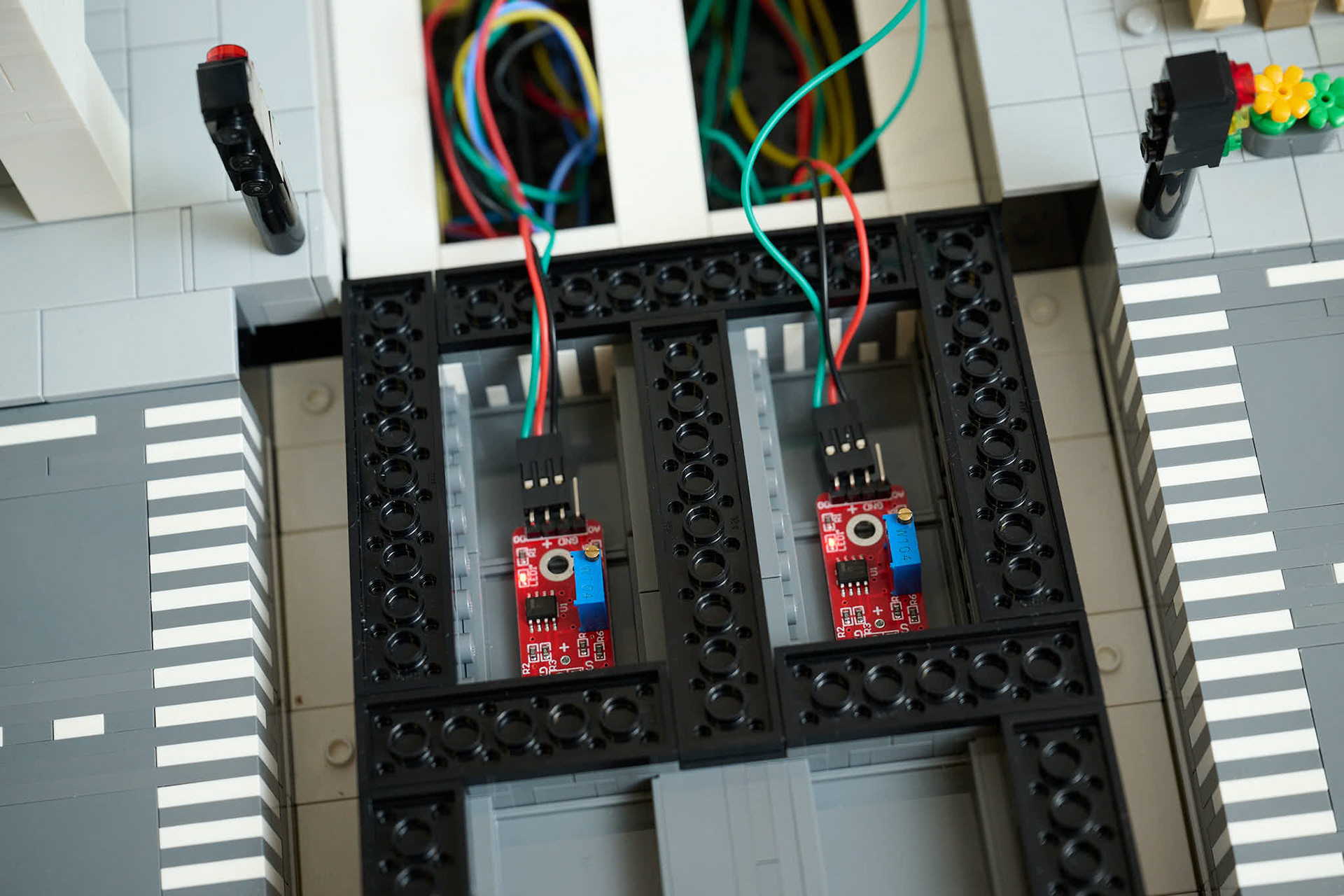
The controllers, sensors and cables are all hidden away. But the streets can be lifted up to allow access to the wiring for maintenance. One of the streets also has a small window, to allow the audience to see some of the technology.
The whole model is conceptualised to facilitate interaction. The streets form an L-shape, close to the edges of the model, so people can easily reach and move the cars and see the traffic counting and parking sensors work and react in real time. All of these design decisions were made to make the model more approachable for a general audience and help communicate the mostly invisible technology of the Smart city project.

